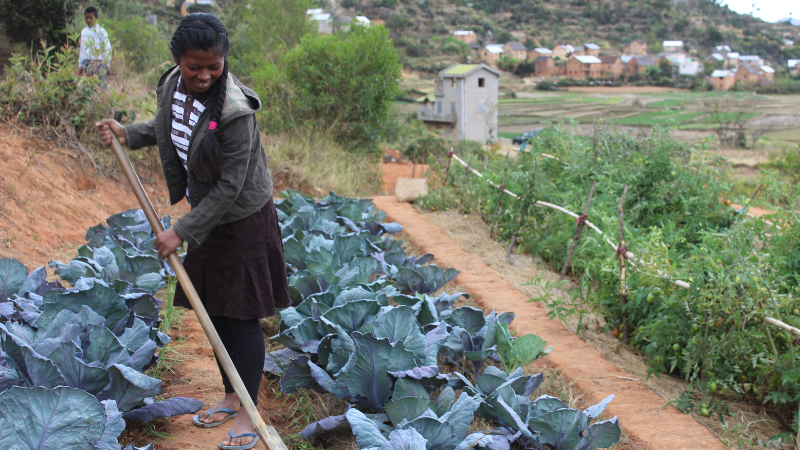by FANJANIRINA Heriniaina from FIFATA
Description
Increased temperatures and rainfall patterns directly affect crop yields, and indirect effects are due to changes in water availability for irrigation (lack of rainfall for an extended period).
Climate change will have varying effects on irrigated crop yields.
Higher temperatures decrease yields of valuable crops while leading to an increase in weeds, pests, and various crop diseases.
Changes in rainfall patterns increase the likelihood of short-term crop failure and long-term production decline.
Intensification of cyclones and floods.
In light of this, the following impacts are noted:
- Decreased productivity and food insecurity.
- Delay in the agricultural season (rice cultivation).
- Difficulty in finding seeds suitable for climate change.
- Decreased yield of agricultural products and decrease in farmers’ income.
Below are listed the practices to face the effects of climate change:
Adoption of agroecology techniques (animate and train farmers on agroecological practices; train farmers as nurserymen to supply young plants to farmers – reforestation; set up farmer field schools and agroecology demonstration plots as a showcase and technical dissemination tool for farmers – soil conservation techniques, crop diversification, tree cultivation, etc.
Environmental protection and combating the effects of climate change through reforestation and afforestation (easy storage of the products; manufacture of composters, liquid basin, lombricompost, development of the plot (contour farming), plantation of young plants, embocagement (planting hedges around fields), alive hedges, use of the improved fertilizers as compost, by introducing the diversification of vegetable, crop rotation.
Reduce forest exploitation in all forms and reduce air pollution.
Practise cover cropping (use of mulches). Farmers use artisanal boreholes, solar water pumps, and motor pumps to water crops.
Results
The agroecological practices lead to increased yields and lower production costs for the farmers. Crop diversification improves and preserves the soil. Even if the results are not immediate, this practice could lead to sustainable improvements in farmers’ income, as agroecological products are sought after in the market and sustainable preservation of the environment. It also shows to yield stability for perishable products. Furthermore, the practices strengthen cohesion and exchange between members. They stimulate joint reflection in the search for the best practice (at the level of the farmers’ group).
Climate smartness*
Agroecology enables a holistic and integrative approach that contributes to strengthening food security and sovereignty from the plot to the landscape scales through the diverse set of practices contemplated in this case. All of them converge on some relevant points, the care and enhancement of biodiversity that has co-benefits in ecosystem services such as regulation and purification of water, pollination and protection against pests and diseases, which strengthens the resilience of farming systems. At the same time, this group of interventions has positive advantages in carbon capture and emission reduction, on the one hand through carbon sequestration in tree biomass and soil organic matter and on the other, reducing the intensity of emissions per unit of product due to the use of alternative energies and organic agricultural inputs with less environmental impact.
*This is done in the framework of climate-smart agriculture (CSA) approach. Climate-smartness in agriculture means understanding impacts of climate change and variability along with the agricultural activity, which includes the planning of what crop to plant, when to plant, what variety to plant and what type of management practices are needed to reduce the impact on the environment (e.g. emissions reduction), maintain or increase productivity (e.g. yields) while increasing resilience and improving livelihoods.


